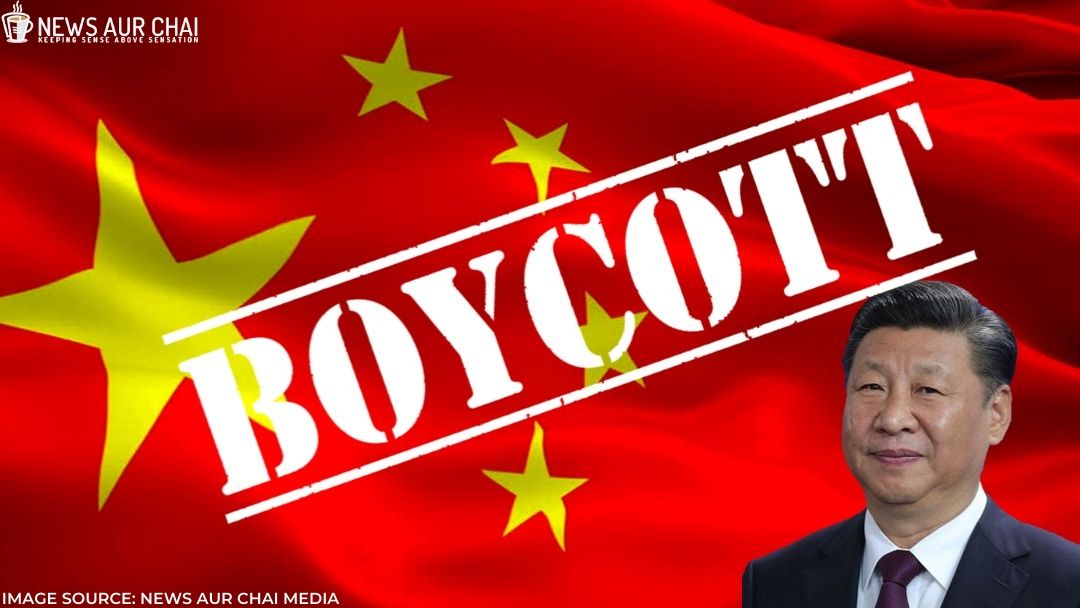
On the night of June 15, we witnessed the most fierce India-China clash in 58 years in the freezing Union Territory, Ladakh. Outraged, many Indians, decided to “Boycott China”, as a mark of respect to the soldiers killed in action. Following which, India on Tuesday banned 59 Chinese apps including the popular platforms like TikTok, WeChat and others.
Boycott China isn't just a slogan any more,it's an emotion running across length and breadth of India
Today's visuals from kankinara
Jai Hind 🇮🇳🇮🇳🇮🇳#BoycottChina@KailashOnline @MenonArvindBJP @shivprakashbjp @blsanthosh @narendramodi @rajnathsingh @Sunil_Deodhar @anirbanganguly pic.twitter.com/O2LnXlOm1Z— Arjun Singh (@ArjunsinghWB) June 18, 2020
Is it possible to boycott all Chinese products?
Yes, it is. However, experts say boycotting China is “better said than done”. This is evident through the strong dependence of the Indian manufacturers and consumers on the Chinese products and capital. In addition to the heavy reliance, the volume of the trade happening between the two countries is remarkably high.
Union Minister, Ramdas Athawale, had gone to the extent of suggesting a ban on Chinese food being served in Indian restaurants. The same is not likely to happen, as Chinese cuisine is famous and loved in India, and in no way going to affect China’s economy. Moreover, it is Indian businesses that are going to bear the wrath of the minister’s advice. There is going to be massive job loss and locks on profiting businesses.
Reasons why “Boycotting China” could be a hurdle:
- China is India’s second-largest trade partner, holding around 10.6 per cent of the total Indian trade. (as per the trade in 2019-2020). However, India is China’s twelfth trade partner, holding only 2.1 per cent of China’s total trade;
- According to the United Nations Conference on Trade and Development’s (UNCTAD) data in 2018, India imports about 15.3 per cent of its products from China and only 5.1 per cent of India’s exports go to China;
- India could lose out on the current and potential Chinese investments;
- Eight lakhs Indians visit China every year, whereas only 2.5 lakhs Chinese visit India.
Boycotting the Chinese products will definitely harm India’s trade in a huge way. If the Indian Government decides to succumb to the intense public plea and increase the Import Duty on the Chinese goods, then the consumers will get severely affected. However, if India can bring about with other alternatives for these products, boycotting won’t be an issue in the long run.
India’s unique retaliation
- People in Ahmedabad got rid of Chinese televisions, and traders in New Delhi burnt Chinese goods. Amit Bhandari from Gateway House says, “boycotting Chinese apps might be more effective than boycotting physical products in terms of Value Added, because there are multiple alternatives”. Many tweets also showed various other protests, where people were seeing throwing or dismantling the product or showing placards at department stores.
#ChineseProductsInDustbin @mukundmasal @SG_HJS @yogesh_dimble @AgawneDeepak @Milind_MMD @Gubyad_Snehal
All Hindu business and customer (from pisoli, pune) are united now and not using chinese product at all
vande mataram pic.twitter.com/HHX6Ed7EOj
— Mahesh Pathak (@mahesh_hjs) June 18, 2020
- On June 26, a video wherein an Indian soldier is appealing to the Indian viewers to boycott the Chinese goods, and mobile apps is doing rounds on social media. He goes on to add that the Indian Army is trying its level best to protect the nation and as responsible citizens, we must fulfil our duties by boycotting the Chinese items and mobile apps.
https://twitter.com/ItsSarvadamanD/status/1277642806085980160
#अब_चीनी_बंद
With the consent of the shopkeepers of Gwalior, Rajiv Plaza, the sign boards of chinese products Vivo, Oppo etc. be removed.
Shopkeepers also decided not to sell Chinese products in future …
Boycott China.
Hindi chinese bye bye. pic.twitter.com/s57deoh8EG— चेतक (@maharanaprattap) June 27, 2020
A few notable Indian alternatives available to the Chinese mobile apps are as follows:-
| Chinese Apps | Indian Alternative |
| TikTok | ShareChat |
| UC Browser | JioBrowser, Epic web browser |
| CamScanner | Adobe Scan |
| BeautyPlus and YouCam Perfect | Indian Selfie Camera |
| WPS Office | Google Drive |
| VivaVideo | Photo Video Maker |
- The Confederation of All India Traders (CAIT), a strong union of 70 million local traders, has decided to intensify its nationwide movement against the Chinese goods. As of now, more than 100 products are under various stages of anti-dumping action. Recently, there is a widespread opinion that improving trade and investment relations with other countries such as Taiwan, could be effective steps to remove the economic dependency of India on China;
- In Kolkata, a group of Zomato employees went on to burn the company’s t-shirts to show their protest against the Chinese investment in the firm.
- In Bihar, the state government announced the cancellation of a tender that involved Chinese companies, for the construction of a new mega bridge project.
Few notable decisions taken by Government
- Suppliers must mention the “country of origin” to boost the sale of local products and eventually push out the Chinese manufacturers.
- New sellers on the Indian Government’s online procurement platform will have to register the origin of their products. The products already available on the platform must comply with the new requirement or face the consequence of being removed.
- The buyers will be allowed to buy only those products that have at least 50 per cent local content, in the platform as mentioned above.
- Prime Minister Narendra Modi’s initiative ‘Make in India’ will be promoted by providing utmost preference to those companies whose goods and services comprise of at least 50 per cent local content.
There is no doubt that India is highly dependent on the Chinese for their products. However, as India has taken a major step by boycotting 59 Chinese apps on Tuesday, and the journey ahead to block other goods and services with Chinese-link seems achievable.
Following which, many Indian apps were brought into the notice of the people that were already prevailing in the market. This step also paves ways to not only for Indian techies but also for people in other fields to brainstorm and think for more alternatives.






One Comment